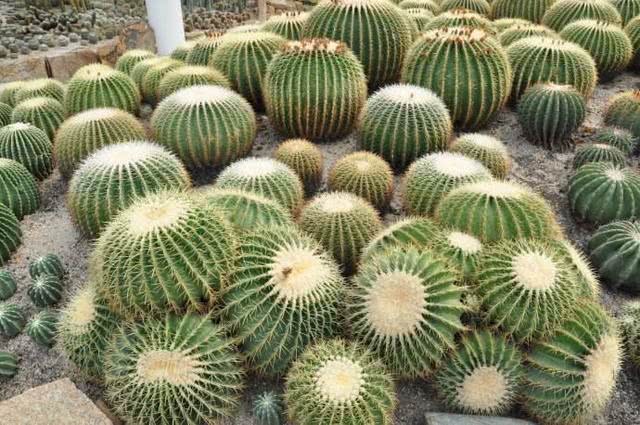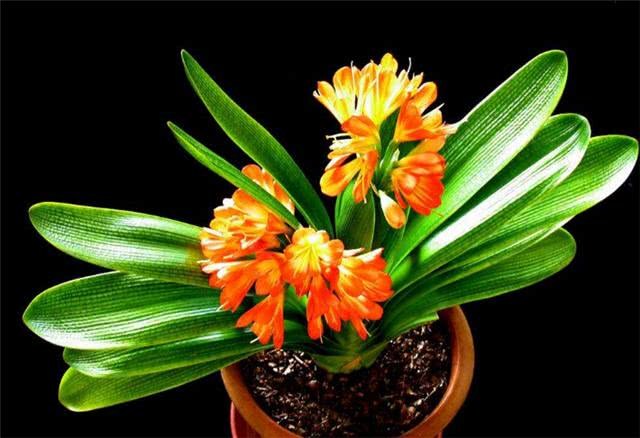If you want to raise the bright golden tiger cactus, you should pay attention to these four points.

Golden tiger is one of the most attractive cactus in the cactus. It was originally introduced from the Mexican desert and is grown in vast areas of China. From the growing area, we can see that it likes the place full of sunshine, even if it likes the sun, it can not stay in the sun for a long time, so as to prevent the sphere from being scorched by strong light.
1. Morphological characteristics
The stem of Artemisia mandshurica is spherical, the sphere is dark green, and it has dense yellow hard thorns. When it comes to flowering, it will bloom yellow flowers on the sphere, terminal in the hard thorns, looking very beautiful, and its seed surface is smooth and black.
Second, reproductive technology
There are two breeding methods of golden pea, one is sowing method, sowing with the seeds received in that year, the emergence rate is the highest, the most suitable time for planting each year is from May to September, and the general germination period is more than a month. the sphere of the seedling is very small, growing slowly from the size of red bean, and can be transplanted when the sphere is the size of red bean.
The second is the sphere transplanting method, in which some small spheres will grow on the spheres that have been growing for more than three months, and these small spheres will be removed from the matrix and transplanted to sand or brick wood; the seedlings that enter the basin require that the soil be loose enough, and the growth rate of the seedlings that have not been transplanted is very fast. After putting on the pot, ah, avoid the strong light and grow within a week without withering, you will basically survive.
III. Culture management
1. Flowerpot. It is best to select strong permeability, such as mud pots, pottery pots, tile pots, etc., the size of the flowerpot should be replaced according to the growth of the cactus, once it is found that the sphere has grown to the edge of the flowerpot, the large flowerpot should be replaced in time. Although the sphere grows next to the flowerpot, it will affect the shape of the sphere and reduce the beauty of the appearance.
two。 Turn the basin. Cactus usually change the flowerpot once a year or two, first prepare a larger flowerpot, remove the sphere from the old flowerpot, remove part of the soil mass on the root system, and cut off part of the rotten root, withered root and other damaged root system, and then into the pot. When the sphere grows up, it will be more difficult to turn the basin. It can remove some of the old soil on the surface, fill it with some new nutrient soil, and lay a layer of rough stone on the surface without watering.
3. Diseases and insect pests. The growth ability of golden spiders is very strong, and the disease resistance is not weak, but in the hot summer environment, it is easy to be harmed by red spiders, shell insects and other insects, so for the health of the sphere, it is necessary to strengthen the prevention and control of diseases; for red spiders, chemical spraying is generally used, while shell insects and other insects can be wiped out manually.
4. Planting. It is the best time to plant the cactus before it begins to grow. The so-called growth time is the dormant period, which is usually carried out in the hot summer. First of all, cover the Confucius under the flowerpot with tiles, then add some dead branches, coarse sand, etc., fill in the nutrient soil, plant the treated cactus in the middle of the flowerpot, and then bury the soil into the rhizome of the sphere.
The life span of the golden tiger is very long, and it is also very easy to cultivate. The adult golden tiger has a large sphere and fresh flowers, and its ornamental value is very high, but it is not large in size and occupies little space, so it is an ideal green plant for greening in urban homes.
- Prev

Do you understand the three main functions of putting flowers and plants in the bedroom?
Owners who like to plant flowers at home all like to put flowers and plants in balconies, living rooms and bedrooms, but they do not know that there is a lot of knowledge. They can't put them casually, nor can they put all kinds of flowers.
- Next

It is so practical to water the leaves of Magnolia lanceolata with it for the first time.
Everyone knows that it blooms generously and brightly, no matter it grows in the courtyard or the living room, it can add color and vitality to life, and it is very easy to maintain it, as long as it is maintained according to the habits of flowers.
Related
- Wuhan Hospital Iron Tree Blooming Result Was Instantly Frightened by the Gardener Master
- Which variety of camellia is the most fragrant and best? Which one do you like best?
- What is the small blue coat, the breeding methods and matters needing attention of the succulent plant
- Dormancy time and maintenance management of succulent plants during dormancy
- Minas succulent how to raise, Minas succulent plant pictures
- What are the varieties of winter succulent plants
- How to raise succulent plants in twelve rolls? let's take a look at some experience of breeding twelve rolls.
- Attention should be paid to water control for succulent plants during dormant period (winter and summer)
- Watering experience of twelve rolls of succulent plants
- Techniques for fertilizing succulent plants. An article will let you know how to fertilize succulent plants.

